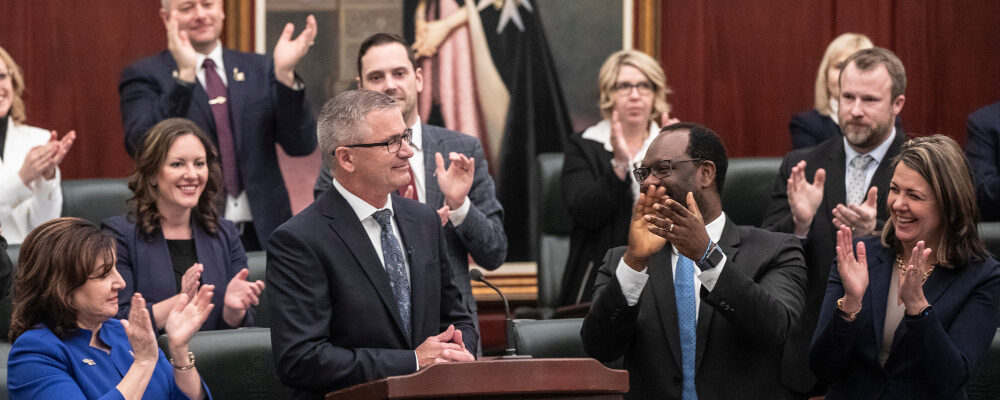In its recent budget, Danielle Smith’s government in Alberta introduced a “new fiscal framework.” While it’s a positive step forward, the framework is based in statutory law, which means the current and future governments can easily ignore, change, or eliminate it at any time. Put simply, the new framework will only work so long as governments choose to follow it.
Specifically, the new framework mandates balanced budgets (except when there’s an unexpected disaster or sharp decline in revenue including oil and gas revenue). It also limits annual increases in operating spending to the rate of population growth and inflation, and set rules for the use of future surpluses—at least 50 percent of any surplus must go towards paying off debt with the remaining deposited in a new “Alberta Fund” to be used to either pay down debt, save in the Heritage Fund or spend on one-time initiatives.
In the past, the province has experimented with similar statutory rules intended to impose fiscal discipline on governments. The rules worked well during good times but unfortunately were easily discarded when times got tough, precisely the times the rules were intended to help manage.
Consider the Heritage Fund, first introduced by the Lougheed government in 1976/77. Originally, the government was required to deposit 30 percent of resource revenue annually. If followed, this 30 percent rule would have helped governments spend more sustainably and avoid large deficits. But the rule was based in statutory law, which meant the provincial government (specifically, the Alberta legislature) could unilaterally change the rule.
And it did. Following an oil price collapse in 1982/83, the government reduced contributions to 15 percent. Following a second oil price collapse in 1986/87, the government ended mandated resource revenue contributions entirely. As a result, today all resource revenue is typically included in the budget and continues to create volatility in provincial finances.
The Alberta Sustainability Fund (ASF) was another attempt to use statutory rules to help Alberta’s finances. Established in 2003, the fund was meant to “stabilize” a specific amount of resource revenue for the budget, which would limit the amount of money available for spending while saving any excess resource revenue during the good times to be used when resource revenue fell below the stabilized amount. The logic was simple—save during good times to provide a stable level of resource revenue during bad times.
However, following the 2008 financial crisis, consecutive provincial governments disregarded the rule, drained the fund entirely to support the budget, and the ASF was officially eliminated in 2013.
Both the Heritage Fund and ASF started with well-intentioned rules and had the potential to help stabilize Alberta’s finances (just like the Smith government’s new fiscal framework). But in both cases, the fiscal rules didn’t last because they were statutory and therefore easy for governments to change.

To ensure fiscal rules are robust over time, they should be constitutional, which makes them much harder to bend or break. And contrary to popular opinion, it’s possible to change Canada’s Constitution for province-specific measures. First, the Alberta government must conduct a referendum in the province—in this case, asking Albertans if they agree to the terms of the new fiscal framework. If the majority of Albertans vote in favour of the proposal, the Alberta government then must pass provincial legislation to recognize the new rules and present this legislation to the federal House of Commons and Senate for recognition, resulting in a change pertaining to Alberta in the national Constitution.
After that, if a future Alberta government wanted to reverse the rule or ignore its requirements, it would need to reverse each step in this process. Specifically, it would have to seek public approval through another referendum, pass provincial legislation, then ask the federal government to approve similar legislation. That’s a lot of work to undo rules meant to spare Albertans from more deficits and government debt.
To truly secure long-term fiscal stability, Alberta needs more robust fiscal rules. By making fiscal rules constitutional, they can’t be easily ignored, disregarded, or eliminated in the future.




